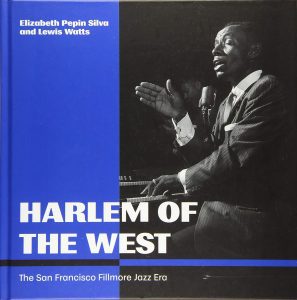Interview with Elizabeth Pepin and Lewis Watts
Download the mp3 here

The Fillmore played a big part in my life.
In 1967, as a seven year old I used to take my 5 year old brother to school and we changed buses at Fillmore and Geary. Public transit. Different times!
Later I lived on California and Fillmore from 1990 to 1998, a glorious time to live in San Francisco.
During that period, I built one of the world’s first online-only museums and it was dedicated to – of course – the history of Fillmore Street.
Every shred of Fillmore’s illustrious jazz history had been stripped away by that point, but bit by bit I reassembled what I could.
Then along came Elizabeth Pepin and Lewis Watts who began an ongoing multi-decade labor of love documenting one of America’s great African-American communities and what at the time was one of the hottest jazz scenes west of the Mississippi.
Their book – now in a brand new addition with 100 brand new pages of photos and text – is luscious.
You can’t understand the history of jazz without having a feel for the “scenes” that made jazz possible and this may be the best capture of a 1940s+ era jazz scene ever.
My fervent wish is that every “scene” find archivists, historians, and story tellers with the same passion and dedication as Pepin and Watts to capture their story while it’s still possible to talk with the people who lived it. This is not just important jazz history, it’s important American history.
A great book for every jazz lover.

– Ken McCarthy
Jazz on the Tube
P.S. Our unique programming is made possible by help from people like you. Learn how you can contribute to our efforts here: Support Jazz on the Tube
Thanks.
Music credit: The Jazz on the Tube podcast theme song is “Mambo Inferno” performed by The Manhattan School of Music Afro-Cuban Jazz Orchestra conducted by Bobby Sanabria from the CD ¡Que Viva Harlem!







